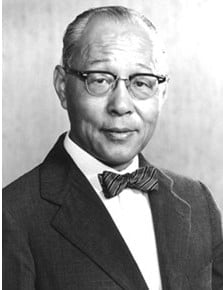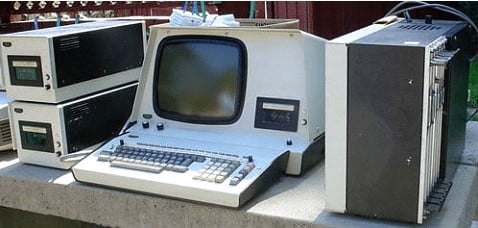3 Facts About Wang 2200 Computer
- The Wang 2200 Computer had a storage capacity of 4KB RAM.
- It included disk subsystems that can be attached to about 15 computers.
- Wang Laboratories, the parent company of the Wang 2200 Computer, was founded with just $15000.
The History of Wang 2200 Computer: What to Know
The Wang 2200 Computer made its first appearance to the public in May 1973. Developed by Wang Laboratories, a company founded with $15,000 in 1951, the Wang 2200 computer was designed as the first minicomputer to perform data processing using common computer language. This device had a cathode-ray tube, keyboard, and a computer-controlled cassette tape.
In the mid-1960s, Wang Labs had made a name for themselves in building a series of increasingly sophisticated electronic calculators, such as LOCI, the Wang 300 and 700 families, and many derivative products. Seeing that calculators were getting cheaper and developments in LSI technology would soon make them a commodity item, An Wang, the founder of Wang Labs, decided to develop a general-purpose computer.

Although the design failed multiple times before eventually achieving success, Wang 2200 computers recorded over 10,000 sales within the first three (3) years it was commercially available. And until its ultimate failure in 1992, Wang Labs sold 65,000 units of the machine.
The first Wand 2200 was shipped in May 1973. Over time, various peripherals were developed, and enhancements were made to Wang BASIC with a new microcode.

Built before the microprocessor era, the Wang 2200 minicomputer processor was built using a couple of hundred TTL chips spread over half a dozen boards and housed in a heavy steel box. It also had a capable BASIC interpreter written in microcode, which could be turned on and used within seconds.
The 64×16 cathode ray tube (CRT) display made editing and running programs interactive and immediate, compared to the then-standard method of studying printouts on green bar paper. 2200 was also expandable; eventually, nearly 100 different peripherals were developed for the system.
Wang 2200 Computer Versions: Each Edition
Early Wang 2200 Models
2200A & B were the first models of the Wang 2200 Computer, released in April 1973. The major differences between these two models were the amount of microcode they contained: the B model included additional commands in Wang BASIC – these extra commands were related to data handling, allowing them to easily construct databases.
The 2200C model was introduced later: it included more commands than the B model, including the basic error handling command.
The 2200S & T models replaced these three (3) earlier 2200 models. S & T re-implemented the Central Processing Unit using newer integration parts with higher density and larger scale. The S models included commands for strings-numbers conversion, while the T version included output/input functions and a full set of matrix math commands, similar to those in later versions of Dartmouth BASIC. In addition, while A, B, & C versions used an external power supply, S & T’s source of power was internal.
Not too long after, 2200 E & F models were introduced. Although their features were very similar to S & T version, their primary difference was that they changed the output/input subsystems, ensuring compatibility with I/O cards.
Later Wang 2600 Models
After the Central Processing Unit was redesigned entirely in 1974, the machine language ran on a completely different machine code. Hence, the need to also re-implement various CPU components. Consequently, the Wang 2600 computer was re-implemented and reintroduced in September 1976 at the Westcon Show as the Wang 2200VP computer. This computer could open up to 16 files simultaneously, permits Absolute Sector Addressing and Automatic File Cataloging, etc. This new update facilitated several devices, especially for telecommunications.
Not long after, the micro-VP, Wang 2200MVP, version was released to replace 2200VP. The newer version supported high-speed printers, 9-track magnetic tape, telecommunications, special instrument controllers, and IBM diskette.
386-Based Versions
Wang Laboratories introduced the final models of the Wang 2200 minicomputers in July 1989. The Central Processing Unit of the Wang 2200 CS/386 version was 16 MHz Intel 80386 plus the 2200 microcode. The machine completely fits into a plug-in card, replacing the 2200VP style Central Processing Unit in the existing design.
The Public Response
Over the years, 2200 evolved to a desktop computer with an ever-more powerful BASIC dialect to accommodate multiple users simultaneously, support up to 16 workstations, and utilize commercial disk technologies that appeared in the late 1970s and early 1980s. New models were produced for nearly 20 years before Wang ended development.